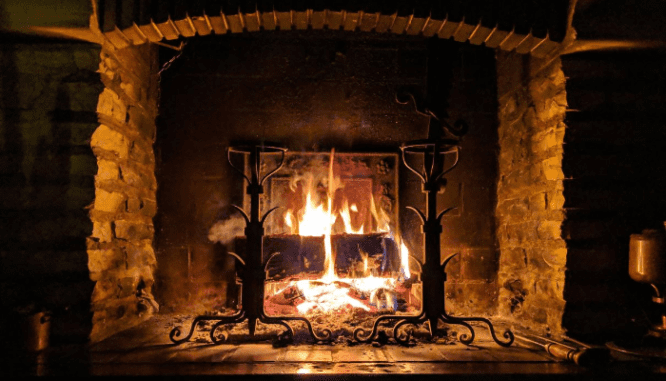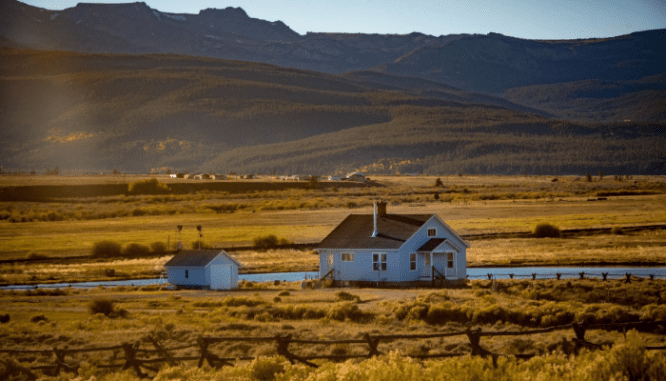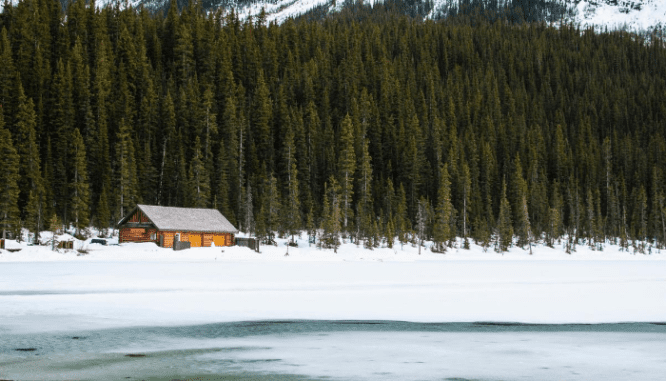12 Of the Most Common Repairs Needed After a Home Inspection
- Published on
- 5 min read
-
 Evette Zalvino Contributing AuthorClose
Evette Zalvino Contributing AuthorClose Evette Zalvino Contributing Author
Evette Zalvino Contributing AuthorEvette is just your average HGTV fan who dreams of having a home worthy of being on one of those shows. When she isn't writing for HomeLight, she's working at her local real estate office. In her downtime, you'll find her searching for the next great hiking trail in her area.
At HomeLight, our vision is a world where every real estate transaction is simple, certain, and satisfying. Therefore, we promote strict editorial integrity in each of our posts.
The home inspection: It’s that critical moment when the buyer anticipates that everything will be okay with the house — and it’s the time where sellers are biting their nails. The home inspector analyzes the condition of the home, checks to make sure there’s no structural damage, and the various systems work properly, and whether the home requires any of the common repairs needed after a home inspection.
Then, they document their findings.
The inspector doesn’t have good news; there are repairs that need to be made in order for the home to be “sale ready.” But, what could those repairs be? Are they going to be a dealbreaker, or can the buyer and seller reach an agreement and save the day?
Here are some of the most common repairs needed after a home inspection or a specialized home inspection.

Most common repairs needed after a home inspection
1. Dead trees
Removing dead trees isn’t technically a repair, but you do want to have an arborist come out for an inspection — especially if there are a lot of large trees near the house. Dead trees are a threat because as the wood rots, the more susceptible it is to breaking; and if a tree falls in your yard, on the house, or the power lines, it could cost quite a bit. Homeowners insurance (depending on the kind of coverage you have) will only cover so much. For example, AllState will only cover $500 to $1,000 of the cost.
2. Trip hazards
According to HUD.gov, “trip hazards are caused when there’s an abrupt change in vertical or horizontal separation on any walking surface along the normal path of travel.”
The change in elevation must be 1.5 inches or above for it to be considered a trip hazard. Some examples of trip hazards include:
- Tree roots uprooting walkways
- Uneven or broken pavers or cement walkways
- Inadequate lighting over stairways, steps, or outdoor areas

3. Appliances not working
Home inspectors will inspect some appliances in the house to ensure they aren’t going to be dangerous to the owner. They won’t check every appliance to make sure they are safe, but they will look at:
- Kitchen stove
- Dishwasher
- Built-in microwave
- Garbage disposal
- Stove hood
They may also check that the refrigerator and freezer maintain proper temperatures (40 degrees Fahrenheit for refrigerator and 0 degrees Fahrenheit for freezer).
4. Plumbing, sewage and septic problems
There are a lot of things that could go wrong with the plumbing.
Inspectors are checking for water leaks around the windows and doors. They’ll also check for any broken, rusted, or corroded pipes (in the house and pipes that connect to the sewage system), plus water damage around plumbing fixtures and hookups. While they’re doing this, they are also going to look for mold and mildew, which poses a serious health risk if not taken care of.
And, while they’re inspecting the pipes, they’re going to look for cross-connection problems. In addition, they’re going to make sure the right type of pipe is used. Inspectors are also going to be checking for water spots on the ceiling, as it could indicate there is a problem with the upstairs plumbing (if applicable) or the roof — more on that later.
Although the home inspector will not test the water, you will want to have a water test done to ensure there aren’t any metals in the water, such as arsenic, lead, or cadmium. Homes with a septic tank will need to be inspected for contamination and to see if it’s been pumped, because no one wants backed up toilets or sinks!

5. Electrical hazards
As shocking as it may be, you will want to hire a licensed electrician or an electrical contractor, not just a home inspector, to inspect the home’s electric system. They’ll know what the safety benchmark is for all types of electrical equipment and ensure the design, installation and inspection is up to the National Electric Code’s standards.
Some of the most common issues an electrician may find include:
- Wires are taped or spliced together and not in a junction box
- Three-prong outlets are not grounded and may cause electrical shocks
- Outlets are painted which can cause overheating
- Circuit breakers have more than one live wires running to it
- Electrical panels modified incorrectly, causing flickering lights, outlets not working, etc.
- GFCI outlets do not work or are missing all together
6. Fire hazards
Fire hazards primarily come from electrical problems such as overheated or sparking outlets and gas leaks. However, home inspectors will also look to see if the home has any smoke or carbon monoxide detectors and if they’re in the right places. They’ll check for fire extinguishers and see if the certification is current, too.
Inspectors will also check to make sure the doors and windows are in good condition, open and close easily, and the locking mechanisms work. Faulty doors and windows aren’t just a fire hazard; they are a safety hazard, too!

7. Pest or wildlife infestation
Your average home inspector isn’t going to go deep into the home to find a pest problem. However, they will do a cursory survey and look for indications of an infestation.
Should there be a problem, you will want to find a pest inspector to come out and assess the extent of the issue.
8. Asbestos, radon and lead paint
Asbestos, radon, and lead paint are other items that will require a specialty inspector, but these are three points you do not want to overlook because they can cause serious health problems.
- Scarring of the lungs
- Pleural disease
- Lung cancer
- Mesothelioma
- Smokers have an increased risk of developing lung cancer
- There is a lower risk of lung cancer for non-smokers, but it is still risky
- Damage to the brain, kidneys, nerves, and blood
- Behavioral problems and learning disabilities
- Seizures
- Death

9. HVAC problems
The home inspector is going to examine the heating and cooling elements of your home. This means they’ll check to ensure the wiring and ventilation is safe and doesn’t pose a fire risk.
They’ll look at fireplaces and sprinkler systems as well, to make sure they are safe and work properly. If your home only has a furnace, the inspector will check that, too.
10. Chimney issues
Homes with a chimney should definitely be looked at to ensure there are no problems with the bricks and cement, the flue or connectors, and that the interior is free of any potential fire hazards.

11. Roof damage
Roof repair is a huge expense, and as a buyer, it is important that the inspector checks the roof thoroughly. They should check to make sure there aren’t any missing or broken shingles, the roof is tilting, and check the gutters to ensure they aren’t clogged and the water is able to drain properly.
12. Damage to the home’s structure
Structural damage is another big expense that you do not want to get saddled with. Depending on the problem, it could cost thousands to repair.
The inspector will walk around the perimeter of the home to look for any cracks in the foundation, drainage issues in the basement or crawl space, and the brickwork and masonry isn’t deteriorating, to name a few.

What options do buyers have?
We spoke to one of the top-rated agents in Augusta, Georgia, Joan Steinberg, who has sold 66% more single family homes than other agents in the area. She explained the options buyers have.
Steinberg explains that during the due diligence period, the buyer can order any inspections they choose; if there are any problems or issues that they would like addressed before closing, they can have their agent submit a buyer’s repair request form listing along with a copy of the relevant inspection reports.
“The buyer has the option to ask the seller to repair everything on the list, but most people just ask for any electrical, plumbing, structural, and moisture control, since these are costly repairs. Once the amendment has been submitted, the seller doesn’t have to agree with everything — they can choose what items they will agree to fix.” Then it’s down to negotiating what repairs (if any) will be done.
During the due diligence period (usually 10 to 14 days), the buyer can walk away from the contract if both parties cannot come to an agreement. They get their earnest money back and can continue their search for that perfect home.

Reviewing the common repairs needed after a home inspection
Home inspections are a necessary part of buying a home — because you don’t want to buy a house with problems, or worse yet, problems the seller knew about but did not disclose. The due diligence period is a short window of time to get all of the inspections you want, but remember, the expense of these inspections will come out of your pocket.
If your inspection reports come back with big problems, such as structural damage or a roof that needs replacing, you should submit a request to have them repaired. The smaller things, such as the doors, windows, and tree removal can be done on your own if you just want to get to the closing table.
Whatever you decide, consult your agent first so they can guide you through this part of the negotiation — and hopefully it works out in your favor! If it doesn’t, don’t get discouraged; you can always terminate the contract and look for a new home elsewhere.
Header Image Source: (Magda Ehlers / Unsplash)
